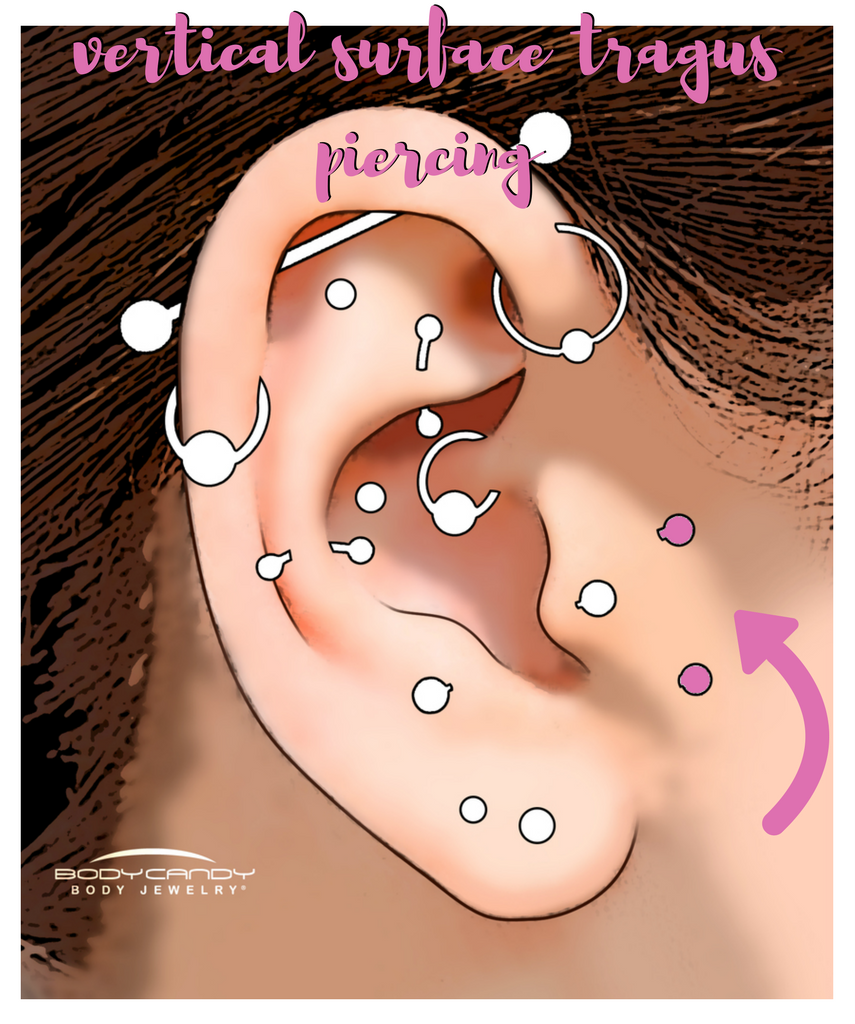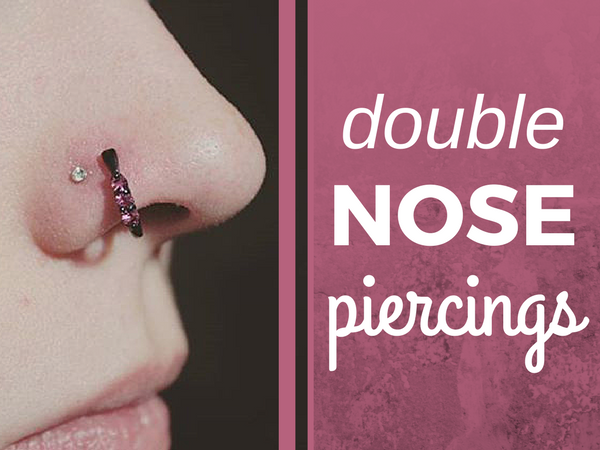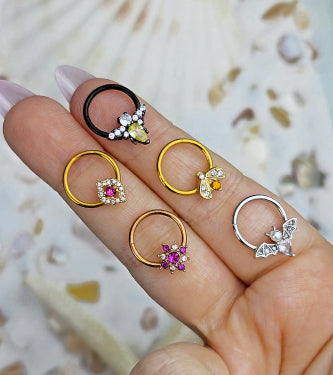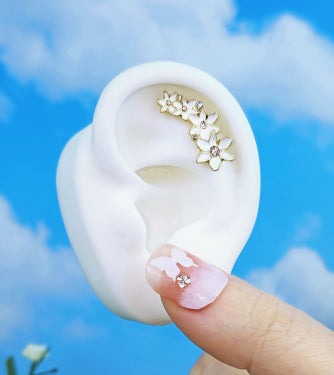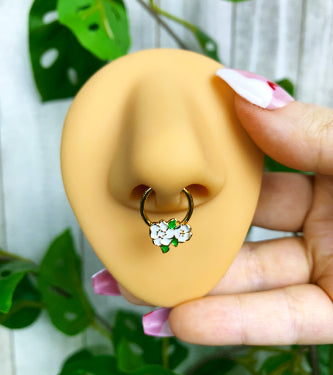
Location: through the flesh above and/or adjacent to the cartilage of the tragus
Jewelry: initially, a surface bar will be used ranging from 18 gauge (1mm) to 14 gauge (1.6mm) in thickness with the length varying depending on the ear's anatomy
Healing: total healing time is usually from 3 to 9 months; can be longer
Aftercare: about twice a day, wash with warm water and antibacterial soap; sea salt solutions and sprays can aid with the process and both are recommended for use in an aftercare routine
The true vertical tragus piercing actually passes through the cartilage of the tragus, but in this case we'll be discussing the increasingly popular surface piercing version of this look. This piercing passes through no cartilage and is classified as a surface piercing, not an ear piercing.
This piercing isn't recommended for those new to modified style. Even in the best of conditions (experienced piercer, ideal anatomy, and use of a surface bar), a vertical tragus surface piercing is prone to migration and rejection. For this reason, you'll want to visit your local piercing professional to see what their expertise has to offer and whether or not if the surface tragus piercing is even an option for you and your ear at all!
General Aftercare Tips for Ear Piercings:
- Avoid smoking, using public telephones, and sleeping directly on your new piercing.
- ALWAYS make sure you wash your hands before touching your piercing/its jewelry.
- Resist the urge to change your initial jewelry prematurely - it's worth the wait to do it correctly.
Also known as the sideburn tragus piercing, this procedure does not go through any cartilage, so the healing process is different than that of the cartilage ear piercings we've mainly discussed so far in this series. This also means that the pain level will be different than typical ear piercings of the cartilage (most claim it's worse).
As we've already mentioned, surface piercings are more prone to rejection or migration from your skin than your typical body piercing. While some people's bodies may openly welcome foreign objects such as body jewelry, other types of immune systems may not be as happy with a new surface piercing. These are all risks to consider before consulting a piercer to get it done.
Want to see some alternative threaded options for your surface tragus piercing whether you just got it pierced or have had it for years?!


We've got you covered here at BodyCandy.com with a ton of surface piercing body jewelry to choose from!
WELCOME TO THE BODY PIERCING ENCYCLOPEDIA
This post is included in the Ear Piercing category of our encyclopedia and is joined by many other blog posts about the other piercings available as options in the ear and surrounding areas.
- Standard Ear Lobe Piercing
- Upper Ear Lobe Piercing
- Standard Helix Cartilage Piercing
- Forward Helix Cartilage Piercing
- Rook Cartilage Piercing
- Conch (Inner) Cartilage Piercing
- Flat (Scapha/Outer Conch) Cartilage Piercing
- Daith Cartilage Piercing
- Snug (Anti-Helix) Cartilage Piercing
- Industrial Barbell Cartilage Piercing
- Tragus Cartilage Piercing
- Anti-Tragus Cartilage Piercing
- Vertical Tragus Surface Piercing
DISCLAIMER: the styles and locations displayed in the reference images featured in this post won't match perfectly with your ear's shape because each and every person has an anatomy that is uniquely individual and some of the piercings featured in our encyclopedia may not be possible for you to get. To find out what piercings are available for you and your specific anatomy, the best option is to visit your local professional piercer and ask for their expertise in determining what piercings are possible for you and your ear!

